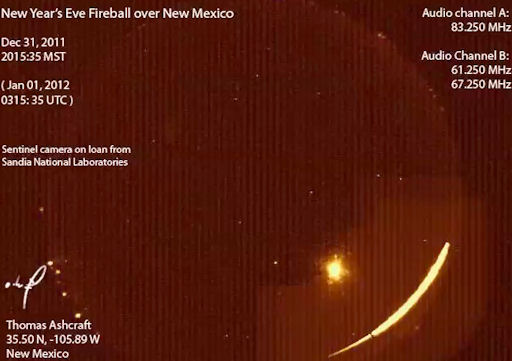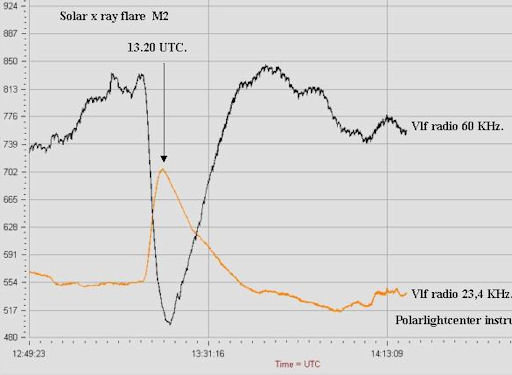Metallic photos of the sun by renowned photographer Greg Piepol bring together the best of art and science. Buy one or a whole set. They make a stellar gift. | | | METEORITE MYSTERY: Earth is mysteriously peppered with fragments of giant asteroid Vesta. (Here's a piece you can have for yourself.) New observations from NASA's Dawn spacecraft suggest an explanation involving one of the tallest mountains in the Solar System. Get the full story from Science@NASA. NEW YEAR'S FIREBALL: The first bright fireball of the New Year streaked over the southwestern USA on Jan. 1st at 03:15 UT. It was visible from Arizona, Colorado and New Mexico. "I was able to see it out my window," reports amateur astronomer Thomas Ashcraft from his rural observatory outside of Santa Fe. "It was brilliant turquoise blue." Ashcraft operates a combination all-sky camera/forward-scatter meteor radar system, which captured the fireball's flight. Click on the image to play the movie--and don't forget to turn up the volume to hear the ghostly radar echo: 
Cameras belonging to NASA's All-Sky Fireball Network also recorded the fireball from multiple locations. An orbit calculated from those data show that the fireball was a random meteoriod hailing from the asteroid belt between Mars and Jupiter. It hit Earth's atmosphere at 26 km/s (58,000 mph), which is relatively slow compared to other meteoroids, and disintegrated 82 km above Earth's surface. "This was an auspicious start to 2012," says Ashcraft. "Clear skies and Happy New Year!" SUDDEN IONOSPHERIC DISTURBANCE: On Dec. 31st, a wave of ionization swept through the high atmosphere over Europe when sunspot AR1389 unleashed another M2-class solar flare. "There was a very clear sudden ionospheric disturbance on my VLF radio instruments," reports Rob Stammes, who sends these data from the Polar Light Center in Lofoten, Norway: 
"The sun is below the horizon where we are located north of the Arctic Circle," says Stammes. "This event shows we still have some contact with the sun." NOAA forecasters estimate a 40% chance of more M-flares during the next 24 hours. There is also a 5% chance of X-flares. Solar flare alerts: text, voice. more data: from Dave Gradwell of Birr, Ireland Potentially Hazardous Asteroids ( PHAs) are space rocks larger than approximately 100m that can come closer to Earth than 0.05 AU. None of the known PHAs is on a collision course with our planet, although astronomers are finding new ones all the time. On January 1, 2012 there were 1272 potentially hazardous asteroids. Notes: LD means "Lunar Distance." 1 LD = 384,401 km, the distance between Earth and the Moon. 1 LD also equals 0.00256 AU. MAG is the visual magnitude of the asteroid on the date of closest approach. | | The official U.S. government space weather bureau | | | The first place to look for information about sundogs, pillars, rainbows and related phenomena. | | | Researchers call it a "Hubble for the sun." SDO is the most advanced solar observatory ever. | | | 3D views of the sun from NASA's Solar and Terrestrial Relations Observatory | | | Realtime and archival images of the Sun from SOHO. | | | from the NOAA Space Environment Center | | | the underlying science of space weather | | 
